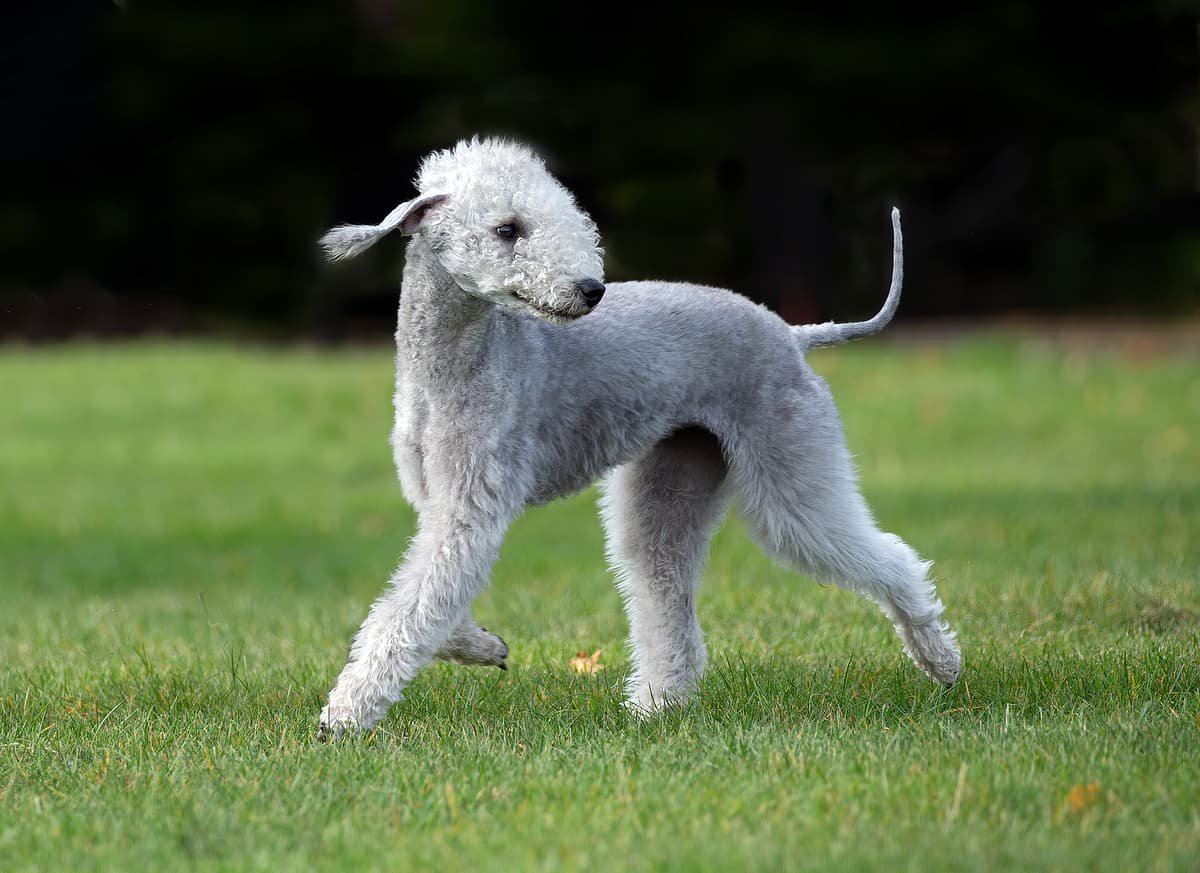Bedlington Terrier vs Labrador Retriever
Discover the differences between Bedlington Terrier and Labrador Retriever to make the best choice for your situation.
Try different breeds

Bedlington Terrier
Gentle, energetic, and unmistakable with a lamb-like appearance, this breed thrives as a loving family companion. Always alert yet affectionate, Bedlington Terriers adapt well to active households.

Labrador Retriever
Eager, friendly, and intelligent, this breed loves being part of an active family. Their gentle nature and loyalty make them outstanding companions for all ages.
Quick comparison
Medium
8–10 kg
Curly, linty texture
12–16 years
7–9 kg
Moderately active
Large
29–36 kg
Short double coat, water-resistant
10–12 years
25–32 kg
High energy
Personality & behavior
Compare the personality traits and behavioral characteristics of both breeds.
Bedlington Terrier
Generally sociable with family and familiar people
Quick learner, responds well to training
Active and needs regular physical exercise
Enjoys games and interactive activities
Adjusts well to different living environments
Labrador Retriever
Warm and sociable with people and animals
Quick learner, responds well to training
High stamina, enjoys active pursuits daily
Loves games and interactive activities
Adjusts easily to new situations and environments
Care needs
Exercise, grooming, and daily care requirements
Bedlington Terrier
Copper toxicosis, patellar luxation
Labrador Retriever
Hip dysplasia, elbow dysplasia
Suitability
How well each breed fits different living situations and families
Bedlington Terrier
Good option
Gentle and adaptable, Bedlington Terriers can suit first-time owners willing to train.
Very suitable
Their size and moderate activity needs make them comfortable in apartments.
Great match
They enjoy regular exercise and play, fitting well with active lifestyles.
Generally suitable
They are patient but supervision is needed due to their Terrier instincts.
Usually compatible
They can live with other pets if socialized early and properly introduced.
Not recommended
Bedlington Terriers can become bored or anxious if left alone for long periods.
Labrador Retriever
Great choice
Patient and eager to please, Labradors are manageable for most first-time owners.
Not ideal
Labradors need space and exercise, so apartments can limit their activity needs.
Perfect fit
High energy and stamina make them excellent for active individuals or families.
Highly suitable
Gentle temperament and playful nature make them safe and loving with young children.
Very friendly
Generally sociable and get along well with other dogs and pets.
Prone to anxiety
Extended alone time can lead to boredom and destructive behaviors in this breed.
Breed strengths
What each breed excels at and their best qualities
Bedlington Terrier
- Gentle with children and family pets
- Low-shedding, hypoallergenic coat
- Alert and effective watchdog
- Energetic and enjoys regular exercise
- Intelligent and learns commands quickly
Labrador Retriever
- Friendly and sociable with people and dogs
- Highly trainable and eager to please
- Excellent with children and families
- Strong retrieving and swimming abilities
- Generally adaptable to various living situations
Challenges & considerations
Potential challenges and considerations for each breed
Bedlington Terrier
- Needs frequent grooming to prevent matting
- Can be stubborn during training sessions
- Prone to copper toxicosis genetic disorder
- May chase small animals due to prey drive
- Sensitive to harsh discipline or loud environments
Labrador Retriever
- Prone to obesity without portion control
- Can become destructive if under-exercised
- Heavy seasonal shedding requires regular grooming
- May develop hip or elbow dysplasia
- Needs significant daily physical activity
Ready to choose your perfect breed?
Learn more about each breed or compare other breeds to find the perfect match for your lifestyle.
Discover more helpful tools
Make use of our other free tools to get the most out of your pet experience
